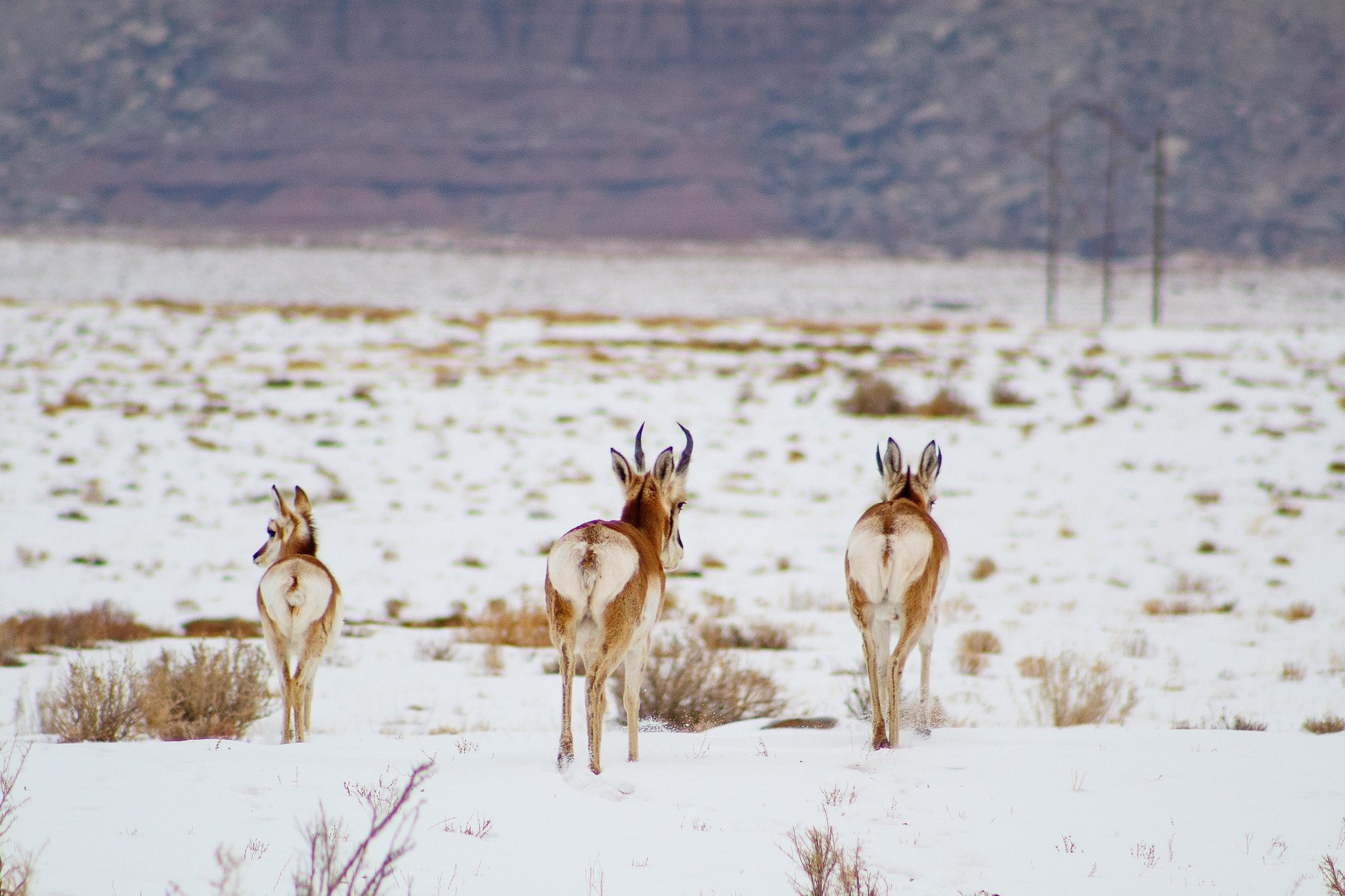Big Game Migrations, Habitat Connectivity A Central Focus for Department of Interior
Last week, the U.S. Geological Survey released Ungulate Migrations of the Western United States, Volume 2. The report showcases 65 deer, elk, and pronghorn migrations mapped with 9 western states and tribal lands, expanding on the 42 migrations displayed in Volume 1. The newest report features 6 mule deer migrations, 5 pronghorn migrations, and 16 elk migrations in Idaho alone!
Scanning through the report, you’re likely to come across maps that cover area and herds that you cherish. IWF staff can’t help but to be enamored with the report. Next time we glass that mule deer doe moving down from the high country in late October, we will remember that we are catching them in a mere snapshot of their migration which often surpasses 100 miles.
Pronghorn in the Owinza herd travel up to 103 miles through lava fields below the Mount Bennett Hills and the Snake River Plain to reach summer and winter range. p. 82-83 of USGS report.
This atlas gives wildlife and resource managers additional clarity into which landscapes are most heavily utilized by ungulates migration routes as seasonal movements and stopover areas. In addition to natural pathways, the report shows evidence of what may be inhibiting animals from completing their journeys and most importantly what must be done to prevent these uniquely Western migrations from vanishing off the map.
Fences, roads, and development in and along migration routes are major threats to the long-term health of our ungulate herds. As IWF covered in Volume 1, disturbances like these can shift historic migratory behaviors or, at worst, cause a loss in these migrations. Studies have shown that once lost, it can take 30-80 years for some species to develop this migratory behavior once again.
Paired with the newest USGS report, the Department of Interior announced its dedication to conserve and restore wildlife migration corridors through partnerships with western states and Tribes. Secretary Haaland reiterated DOI’s commitment to continue Secretarial Order 3362, signed by Secretary Zinke in 2018, proving once again that wildlife conservation transcends political boundaries. Haaland announced that $9.5 million ($2.5 million in grants matched by $7 million in contributions) will be available to seven states and three tribes to enhance habitat connectivity.
IWF and our partners are hard at work to keep these migrations alive. We fight to ensure that Forest Service and BLM Resource Management Plans honor these migrations and incorporate actions that conserve them for generations to come. As hunters, we must take hold of the situation and ensure that the newest science provided to us is put to work on the ground for the future of our cherished big game species.
Cover photo by Kegen Benson, BLM Wildlife Biologist, Bureau of Land Management.
Be sure to stay up-to-date with the latest news on big game, migration corridors, connectivity and more by subscribing to Idaho Wildlife Federation


